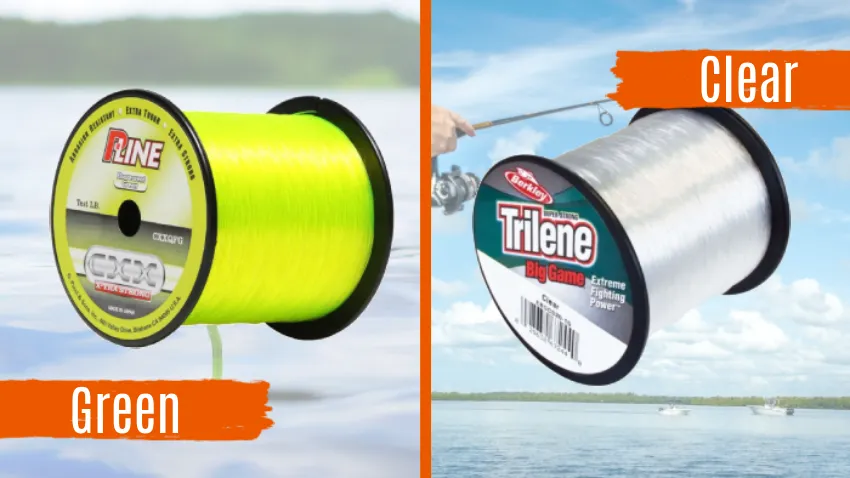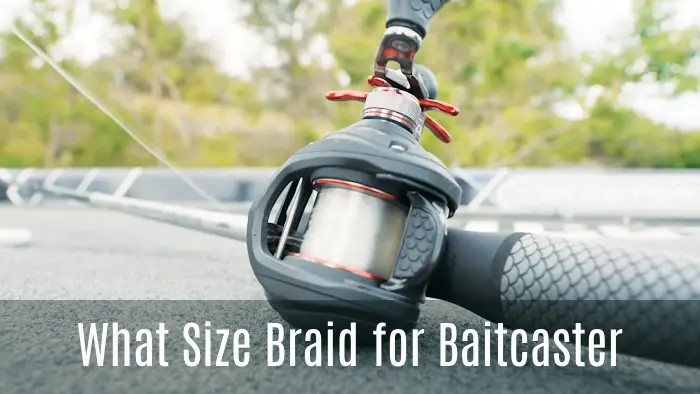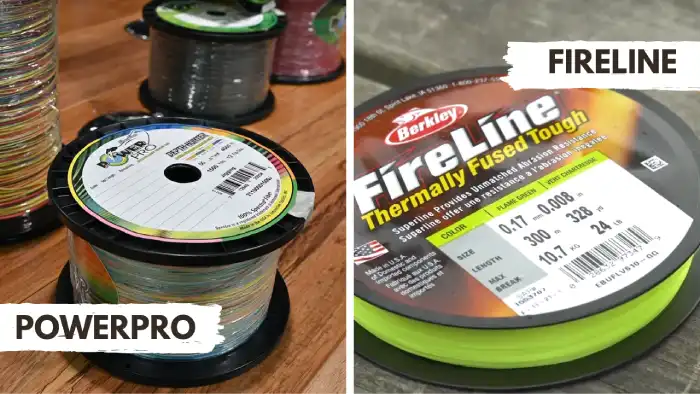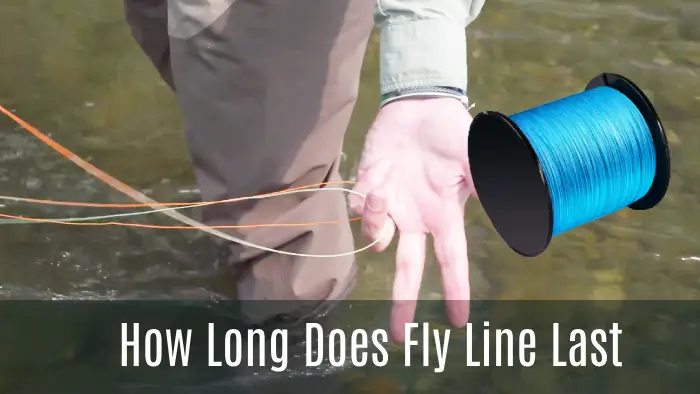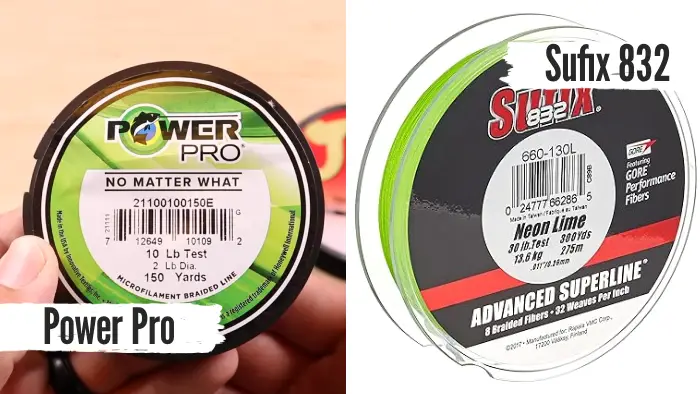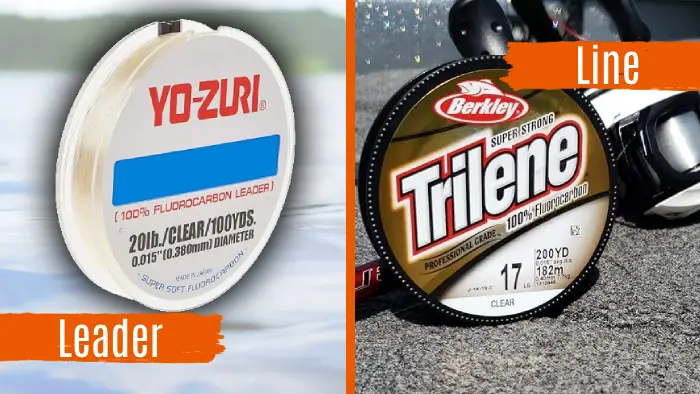Green Fishing Line vs Clear: 10 Differences
Anglers have long debated the importance of fishing line color. The choice between green and clear fishing lines can significantly impact one’s success on the water, with various factors influencing the decision.
A green line blends in with stained or murky water, offering camouflage benefits, while a clear line is less noticeable to fish. Conversely, clear lines are versatile, performing well in a wide range of environments, while green lines may perform better in specific conditions.
Here, we’ll look at the differences between these two fishing lines to help you make the right choice for your situation. Also, explain why people use colored fishing lines and discover which color is best for catching catfish.
Differences Between Green Fishing Line and Clear
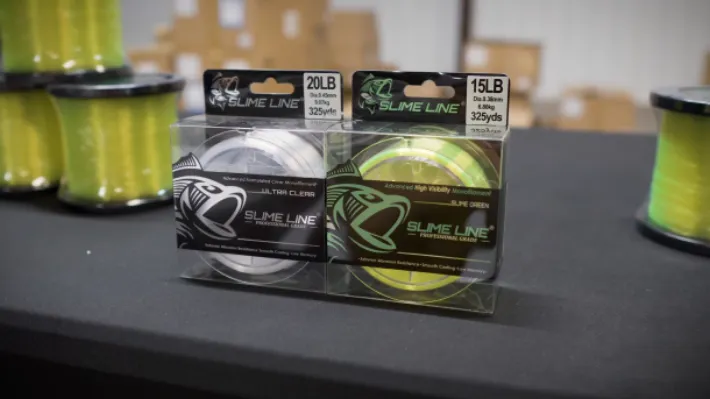
Fishing line colors are often used to increase visibility. Several important factors must be considered when choosing between green and clear fishing lines.
- Visibility in stained water
- Camouflage in vegetated areas
- Matching water color in clear conditions
- Targeting fish species
- Low-light and overcast conditions
- Water background matching in murky conditions
- Fishing line visibility for anglers
- Line weight indication
- Versatility and adaptability
- Fishing line care and maintenance
No 01. Visibility in Stained Water
If you’re fishing in stained water, it’s crucial to consider the visibility differences between green and clear fishing lines.
Green fishing lines are more suitable in these conditions because they blend in with the surroundings, making them less detectable to fish. The green color helps the line to camouflage against the murky water, increasing the chances of attracting bites.
On the other hand, clear fishing lines may stand out prominently in stained water due to their lack of color. The transparency of the line makes it more visible to fish, potentially alerting them to the presence of the bait or lure.
No 02. Camouflage in Vegetated Areas
Green fishing lines offer a distinct advantage over clear lines in these areas due to their camouflage properties. Green lines blend seamlessly with the surrounding greenery, making them less noticeable to fish.
This allows you to present your bait or lure more naturally and inconspicuously, increasing your chances of attracting bites.
In contrast, clear fishing lines may stand out against the green vegetation, potentially alerting fish to your presence and reducing your chances of success.
Therefore, opting for a green fishing line can greatly improve your camouflage and overall fishing effectiveness when fishing in vegetated areas.
No 03. Matching Water Color in Clear Conditions
In clear conditions, you should match the watercolor with your fishing line. Clear fishing lines are a better choice in these situations because they blend in with the natural transparency of the water. The clear line reduces its visibility and increases your chances of fooling the fish.
Alternatively, green fishing lines may appear more conspicuous in clear water, making them less effective. Green lines are better for fishing in areas with heavy foliage, whereas clear lines are best suited to open, unobstructed waters.
No 04. Targeting Fish Species
Different fish have varying sensitivities to line color, which can impact their response to your bait.
For example, rainbow trout, known for their keen eyesight, are more likely to be spooked by a visible fishing line. In such cases, using a clear fishing line can help you remain undetected and increase your chances of luring in these wary fish.
Conversely, species like bass are generally less line-sensitive, allowing you to choose between green and clear lines based on personal preferences and fishing conditions. However, using green lines in such scenarios could deter the fish due to the color contrast.
No 05. Low-Light and Overcast Conditions
In these conditions, green fishing lines offer an advantage due to their ability to blend with the darker, shadowy environment. The subtle green coloration of the line makes it less visible to fish, increasing the chances of a successful catch.
On the other hand, clear fishing lines may become more noticeable in low-light conditions due to their lack of color. This increased visibility could potentially deter fish from biting.
No 06. Water Background Matching in Murky Conditions
To effectively match the water background in murky conditions, you must consider the differences between the green and clear fishing lines.
In these situations, green fishing lines are often preferred as they blend in with the water’s natural tint. The murky or muddy water can cause the clear fishing lines to stand out, making them less suitable for blending.
Green fishing lines have a higher level of visibility in these conditions, allowing them to become almost invisible to the naked eye. This makes them a more effective choice for anglers looking to conceal their line and increase their chances of success in murky waters.
Alternatively, clear fishing lines can be used in murky waters if they are paired with the right lures. In this situation, anglers should look for brighter or fluorescent lures that will help make the line more visible and increase their chances of success.
No 07. Fishing Line Visibility for Anglers
Green fishing lines are often preferred when the water is clear and the background is predominantly green. These lines are high in visibility, allowing the anglers to keep track of their line movements in clear water. They are also the most popular choice for targeting fish near shore, as they can be seen from a distance.
On the other hand, clear fishing lines offer an advantage for anglers who prefer to see their line more clearly. They allow fishermen to better monitor their line movement and detect subtle strikes, whereas green lines mightn’t be as visible above the murky water.
No 08. Line Weight Indication
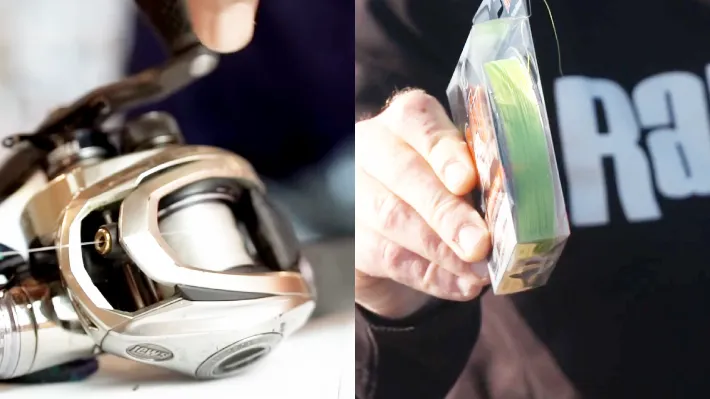
Green fishing line is commonly used for heavier line weights, typically ranging from 15 to 30 pounds. Its high visibility in water allows anglers to track their line movements and detect bites more easily.
Conversely, a clear fishing line is often associated with lighter line weights, typically ranging from 2 to 12 pounds. Its low visibility in water makes it ideal for situations where fish are easily spooked and require a more discreet approach.
No 09. Versatility and Adaptability
Clear fishing lines offer a high level of adaptability, making them a suitable choice in situations where watercolor or fishing conditions are unpredictable. These lines perform well in various environments, allowing anglers to fish in different locations and circumstances.
On the other hand, green lines excel in specific, predetermined conditions. They’re designed to blend in with vegetation and provide an advantage when fishing in heavily covered areas.
No 10. Fishing Line Care and Maintenance
Clear fishing lines are generally less prone to discoloration over time, and any dirt or grime buildup is more noticeable, prompting anglers to clean and replace them as needed.
In contrast, green fishing lines may hide such stains better, but the downside is that anglers might not notice the need for maintenance as easily.
Comparison Table Between Green and Clear Fishing Line
| Aspect | Green Fishing Line | Clear Fishing Line |
| Visibility in Stained or Murky Water | Blends with surroundings, less visible to fish | It may stand out due to the lack of color |
| Camouflage in Vegetated Areas | Blends with green vegetation | Might contrast with greenery |
| Matching Water Color in Clear Conditions | More visible due to the color | Matches clear water, less visible |
| Targeting Spook-Prone Species | It is not ideal for sensitive species like rainbow trout | Effective in clear water for less line-sensitive fish |
| Low-light and Overcast Conditions | Blends with the darker, shadowy environment | Clear lines may become more visible |
| Water Background Matching in Murky Conditions | Matches the water’s tint | Clear lines might stand out |
| Fishing Line Visibility for Anglers | Less visible above water may require closer monitoring | More visible, aids line monitoring |
| Line Weight Indication | Used for line weight identification | It may not indicate the line weight |
| Personal Preferences and Experience | Subjective choice based on the angler’s preference and experience | Reflects individual preferences |
| Versatility and Adaptability | May excel in specific conditions | Suitable for various environments |
Is fishing line color important to fish?
Contrary to popular belief, fish can see color and see the green line better than any other color. This is because green light penetrates water more effectively than other colors, making green lines more visible to fish.
While a clear line may seem like a good choice because it’s less visible in the water, it can still be detected by fish, especially in certain lighting conditions. Therefore, if you want to increase your chances of attracting fish, using the green line is recommended.
Why do people use colored fishing lines?
People use colored fishing lines for various reasons. One of the main purposes is to enhance visibility. When fishing in offshore environments or using multiple rods, high-viz colored lines make tracking and managing the lines in the water easier. This is especially important when dealing with busy fishing spreads.
Additionally, colored fishing lines can help anglers detect subtle movements or bites by providing visual cues. For instance, in muddy or off-colored water, a bright-colored line can stand out and make it easier to spot any line movement.
Conversely, colored lines that blend with the surroundings can offer a stealthy approach when stalking fish in sea-grass flats or oyster bottoms.
What color fishing line is best for catfish?
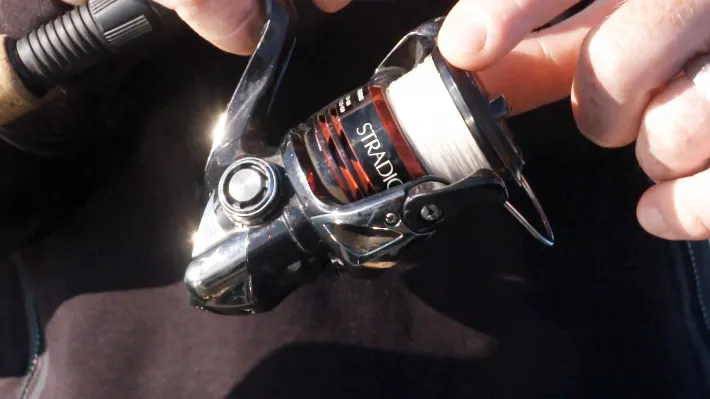
To maximize your chances of success when fishing for catfish in South Dakota, you should consider the best color fishing line.
Since most catfish live in dark or muddy water, bright colors such as neon green, yellow, or orange are recommended. These colors help keep the lines in order and enable you to see what’s going on.
Additionally, catfish are known for their aggression and lack of concern for fishing line color. Therefore, spooling up a bright line is a wise choice.
Green Fishing Line or Clear: Unlock the Secrets to Successful Angling
When and where to use green and clear fishing line colors can mean the difference between a successful catch and a missed opportunity.
Whether it’s the camouflage advantages of green lines in murky waters or the low visibility of clear lines in pristine lakes, each has its place and purpose. Yet, considering personal preferences, fish behavior, and diverse fishing environments are all factors that contribute to the final decision.
As such, you should consider these considerations when selecting equipment to suit each fishing trip’s unique challenges and opportunities.

